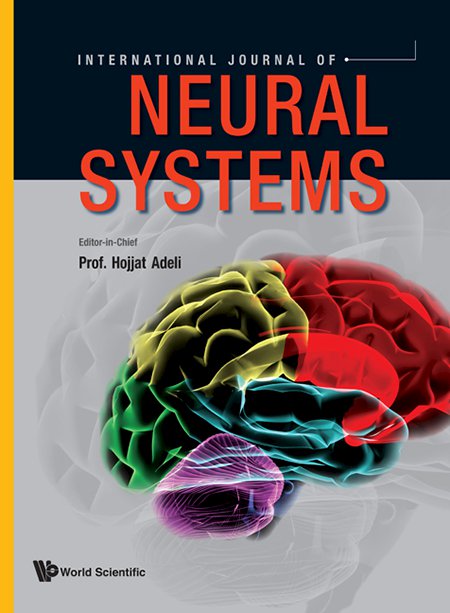轻度认知障碍患者休息时“认知”脑波P3b动态预测阿尔茨海默病
IF 6.4
2区 计算机科学
Q1 COMPUTER SCIENCE, ARTIFICIAL INTELLIGENCE
引用次数: 3
摘要
阿尔茨海默病(AD)是痴呆症最常见的病因,涉及认知能力和社会行为的进行性和不可逆转的下降,从而消灭患者的自主性。理论假设疾病改善药物在早期阶段最有效,希望在称为轻度认知障碍(MCI)的前驱阶段迫切地推动了对认知衰退的强大和个性化标记物的识别,以建立早期药物干预。这需要将完善的神经机制和日益敏感的方法结合起来。在注意力和认知的神经生理标记中,“认知脑电波”的一个子成分P300在一个古怪的范式中可记录-即P3b-被广泛认为是认知表现的敏感指标。一些研究可靠地表明,P3b的振幅和潜伏期的变化与健康和病理的认知能力下降和衰老密切相关。在这里,我们使用P3b空间滤波器来增强175名受试者的脑电图(EEG)特征,这些受试者分为135名MCI受试者、20名老年对照组(EC)和20名年轻志愿者(Y)。Y组负责从脑电图数据中提取P3b空间滤波器,随后将其应用于其他组,这些组在睁开眼睛的休息条件下,没有被要求执行任何任务。在一个月的随访结束时,135名MCI受试者可分为两组:75名稳定MCI (MCI- s,未转化为AD), 60名转化为AD (MCI- c)。P3b空间滤波器是通过功能性源分离(FSS)的信号处理方法构建的,该方法通过使用所有EEG记录通道的加权和来提高信噪比,而不是依赖于单个或一小部分通道。在两组间观察到P3b在休息时的动态有明显的差异。此外,机器学习方法表明,P3b在静止状态下可以正确区分MCI和EC(准确率为80.6%),MCI- s和MCI- c(准确率为74.1%),区分MCI- c和EC的准确率高达93.8%。最后,贝叶斯因子的比较显示,与性能最佳的单电极(Pz)方法相比,P3b动力学方法检测MCI-S和MCI-C之间的组差异的可能性高出138倍。综上所述,我们建议通过空间滤波器测量的P3b可以安全地视为一种简单而敏感的标志物,用于预测从MCI到AD状态的转换,最终与其他非神经生理生物标志物结合,以更精确地定义具有神经病理性阿尔茨海默病特征的痴呆。本文章由计算机程序翻译,如有差异,请以英文原文为准。
Dynamics of the "Cognitive" Brain Wave P3b at Rest for Alzheimer Dementia Prediction in Mild Cognitive Impairment
Alzheimer's disease (AD) is the most common cause of dementia that involves a progressive and irrevocable decline in cognitive abilities and social behavior, thus annihilating the patient's autonomy. The theoretical assumption that disease-modifying drugs are most effective in the early stages hopefully in the prodromal stage called mild cognitive impairment (MCI) urgently pushes toward the identification of robust and individualized markers of cognitive decline to establish an early pharmacological intervention. This requires the combination of well-established neural mechanisms and the development of increasingly sensitive methodologies. Among the neurophysiological markers of attention and cognition, one of the sub-components of the 'cognitive brain wave' P300 recordable in an odd-ball paradigm -namely the P3b- is extensively regarded as a sensitive indicator of cognitive performance. Several studies have reliably shown that changes in the amplitude and latency of the P3b are strongly related to cognitive decline and aging both healthy and pathological. Here, we used a P3b spatial filter to enhance the electroencephalographic (EEG) characteristics underlying 175 subjects divided into 135 MCI subjects, 20 elderly controls (EC), and 20 young volunteers (Y). The Y group served to extract the P3b spatial filter from EEG data, which was later applied to the other groups during resting conditions with eyes open and without being asked to perform any task. The group of 135 MCI subjects could be divided into two subgroups at the end of a month follow-up: 75 with stable MCI (MCI-S, not converted to AD), 60 converted to AD (MCI-C). The P3b spatial filter was built by means of a signal processing method called Functional Source Separation (FSS), which increases signal-to-noise ratio by using a weighted sum of all EEG recording channels rather than relying on a single, or a small sub-set, of channels. A clear difference was observed for the P3b dynamics at rest between groups. Moreover, a machine learning approach showed that P3b at rest could correctly distinguish MCI from EC (80.6% accuracy) and MCI-S from MCI-C (74.1% accuracy), with an accuracy as high as 93.8% in discriminating between MCI-C and EC. Finally, a comparison of the Bayes factor revealed that the group differences among MCI-S and MCI-C were 138 times more likely to be detected using the P3b dynamics compared with the best performing single electrode (Pz) approach. In conclusion, we propose that P3b as measured through spatial filters can be safely regarded as a simple and sensitive marker to predict the conversion from an MCI to AD status eventually combined with other non-neurophysiological biomarkers for a more precise definition of dementia having neuropathological Alzheimer characteristics.
求助全文
通过发布文献求助,成功后即可免费获取论文全文。
去求助
来源期刊

International Journal of Neural Systems
工程技术-计算机:人工智能
CiteScore
11.30
自引率
28.80%
发文量
116
审稿时长
24 months
期刊介绍:
The International Journal of Neural Systems is a monthly, rigorously peer-reviewed transdisciplinary journal focusing on information processing in both natural and artificial neural systems. Special interests include machine learning, computational neuroscience and neurology. The journal prioritizes innovative, high-impact articles spanning multiple fields, including neurosciences and computer science and engineering. It adopts an open-minded approach to this multidisciplinary field, serving as a platform for novel ideas and enhanced understanding of collective and cooperative phenomena in computationally capable systems.
 求助内容:
求助内容: 应助结果提醒方式:
应助结果提醒方式:


